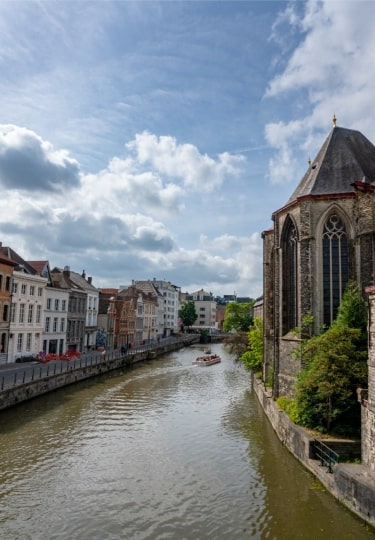When travelers ask “What is Belgium known for?” there are myriad possible answers. Although this small European nation has just under 12 million inhabitants, it packs in a diverse array of cultural, historical, and culinary delights.
As the central seat of power for the European Union, Brussels is a fast-paced, cosmopolitan hub with palpable energy. The capital is officially bilingual, although you’re likely to hear much more than French and Dutch spoken here.
Although Belgium is very much a forward-looking country, the centers of cities such as Bruges or Ghent are full of striking, historical architecture and canals. Expect palaces and cathedrals, as well as art museums proudly displaying oil paintings by the Flemish masters. The country’s compact size and excellent transportation networks make it easy to explore.
Canals
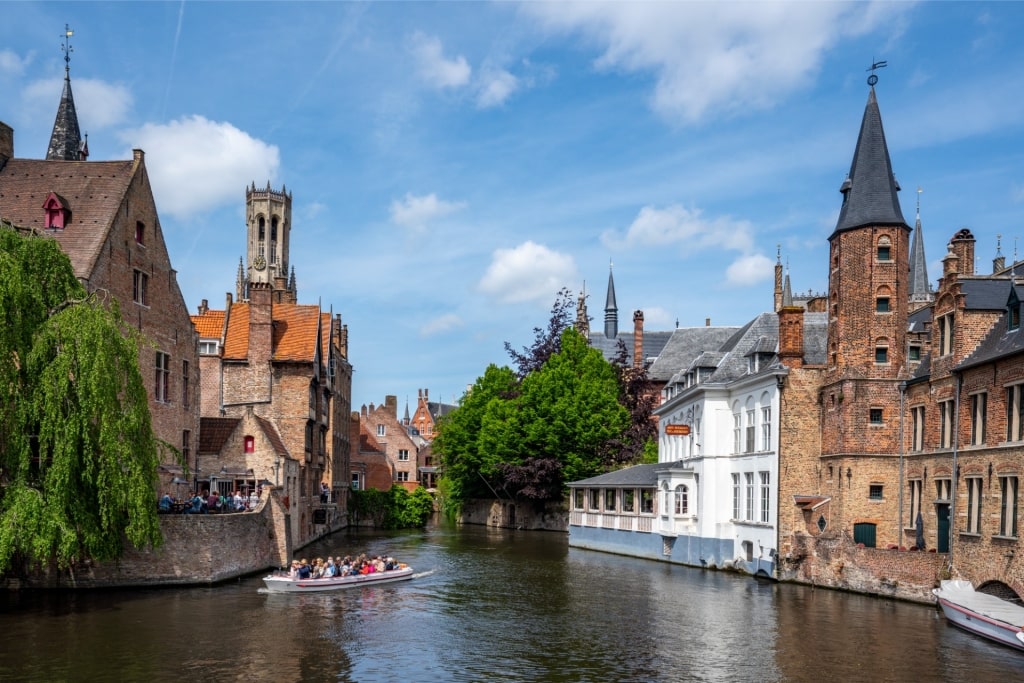
Bruges
There’s a good reason they call Belgium, the Netherlands, and Luxembourg the “low countries.” A large part of the Netherlands and parts of Belgium are actually below sea level. While the Dutch canals are essential for preventing flooding, Belgium’s were primarily for transportation. The canals provided a direct route for ships to reach the North Sea.
The oldest of the nation’s canals date back to the ninth and 12th centuries. These historic waterways can be found throughout the nation but by far the most famous canals can be found in the city of Bruges.
When Belgium was a naval power and a center of global trade, ships carrying precious cargo from all over would sail through these canals. Today, tour boats ply the waters, offering a particularly lovely way to see this romantic city.
Beer
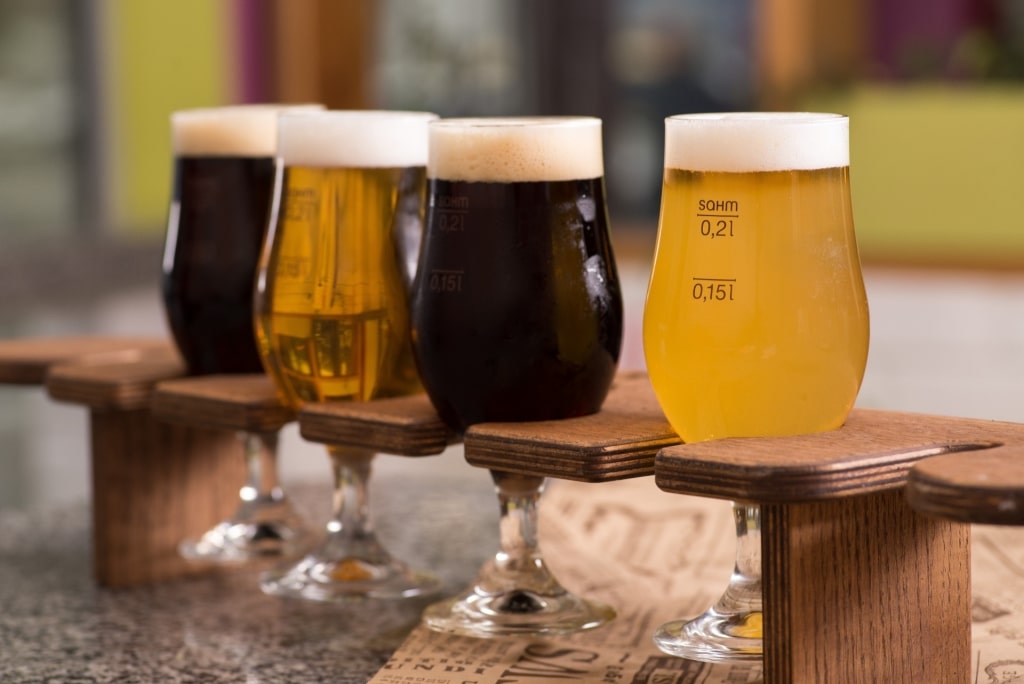
Beer
To say that the Belgians take their beer seriously would be a gross understatement. Archeologists have unearthed evidence of beer-brewing here dating all the way back to Roman times. Since 2016, Belgian beer culture has even held a place on the UNESCO’s Intangible Cultural Heritage of Humanity list.
Part of what makes Belgium’s brewing culture so special is the remarkable diversity of styles, as well as the fact that many of the producers have been in the business for centuries. As locals love to point out, in Germany, their larger, beer-swilling neighbor, beers are fairly standardized. Germany’s centuries-old Reinheitsgebot, or Bavarian “beer purity” law once forbade brewers from using anything other than barley, water, yeast, and hops.
Belgian brewers have never had their creativity hampered in such fashion. For centuries, many of the best beers here have been brewed in monasteries. The term “Abbey beers” generally refers to beers produced by or in cooperation with a monastery.
Trappist beers, on the other hand, may only be produced by a highly select number of certified Trappist monasteries.
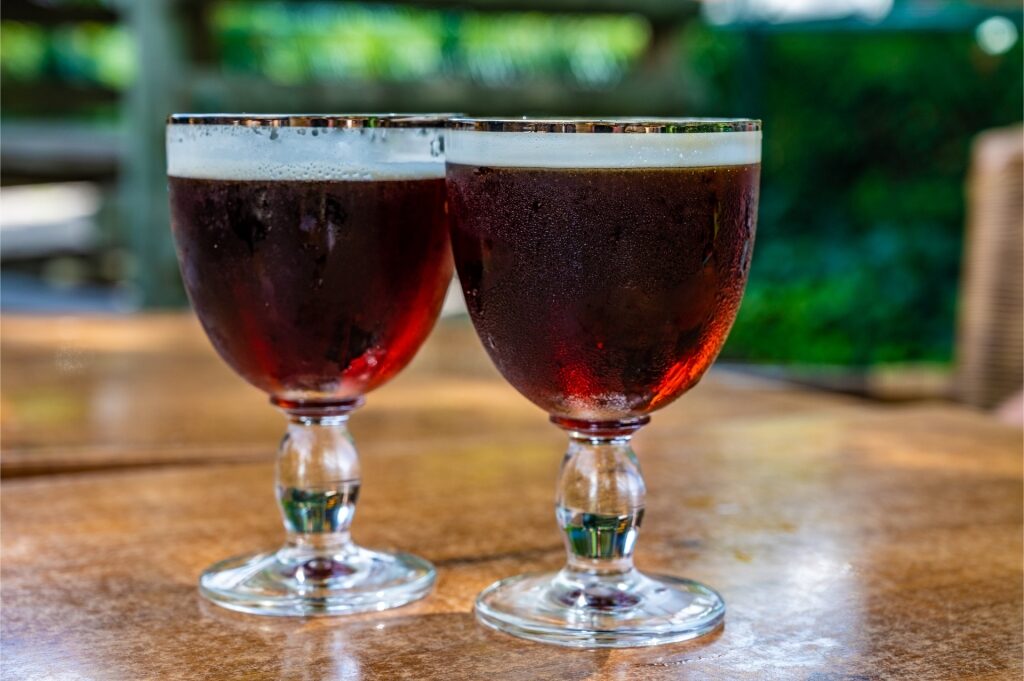
Abbey beer
Other styles to keep an eye out for are saisons, which tend to be lower in alcohol, tripels, or strong pale ales, and Flemish reds, which have a slightly tart finish. Stouts, brown ales, and dubbels, a Trappist favorite, are also common.
For craft beer aficionados, one of the most exciting and highly sought-after Belgian styles are lambics. While most beers rely on commercial yeast, these spontaneously fermented beers rely entirely on wild yeasts naturally found in the environment. Much like great sourdough, connoisseurs claim that these wild yeast cultures give the beer a sense of terroir.
Arguably the most famous producer is Cantillon Brewery, the only surviving lambic brewer in Brussels. First founded in 1900, this family-run brewer is the stuff of legend and their beers are rare outside of their home city. They give terrific brewery tours, which are equally entertaining for casual fans and real obsessives.
Cycling
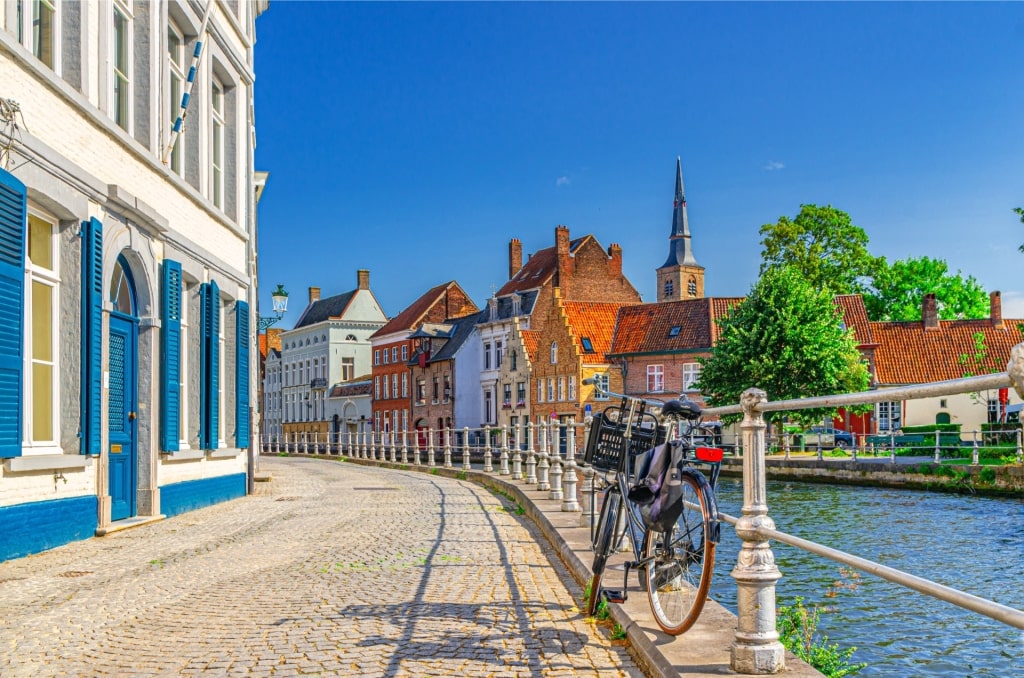
Bruges
If you want to feel like a local in Belgium, there’s no better way to get around than on a bicycle. Belgians take their cycling seriously, both as a competitive sport and as the most practical, eco-friendly way to get around. For the Flemish, in the Flanders half of the country, cycling borders on an obsession.
Bike rental services and cycling tours are widely available in all major Belgian cities. It helps that there are also well-marked cycling paths all over the place and very few hills. The one hurdle to the uninitiated is that many of Belgium’s picturesque streets happen to be cobblestoned. Be prepared for a slightly bumpy—but very scenic—ride at points.
Waffles
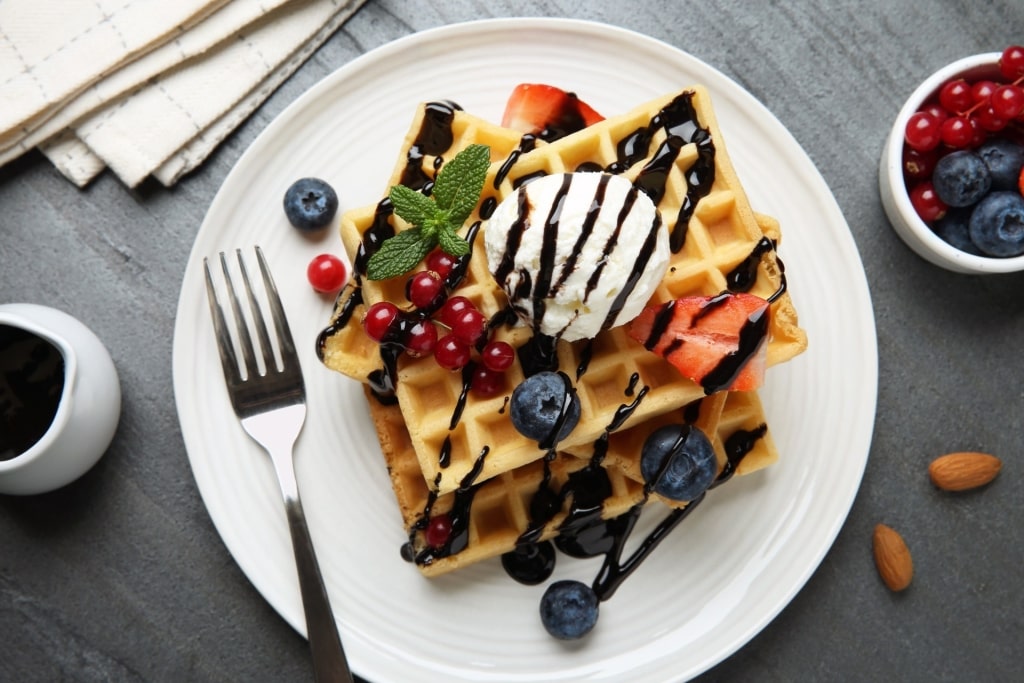
Waffles
Belgium is so obsessed with waffles that it has multiple regional styles of them. The waffles known throughout the United States as Belgian waffles are specifically associated with Brussels. After Walter Cleyman introduced them to Americans at the 1958 World’s Fair, he decided that Belgian waffles would be an easier sell than Brussels waffles.
Regardless of what you call them, these deep-pocketed waffles typically owe their fluffy texture and more nuanced flavor to the fact that they are leavened by yeast. Unlike their American counterparts, these seldom contain puddles of maple syrup. Instead, Belgians prefer to pile on the fresh fruit, shaved chocolate, and tufts of whipped cream.
Liège waffles, meanwhile, are a completely different confection. Named for their home city, these crunchy, irregularly shaped waffles are a traditional street treat. An extra buttery batter and a garnish of pearl sugar make for an indulgent dessert.
The Atomium
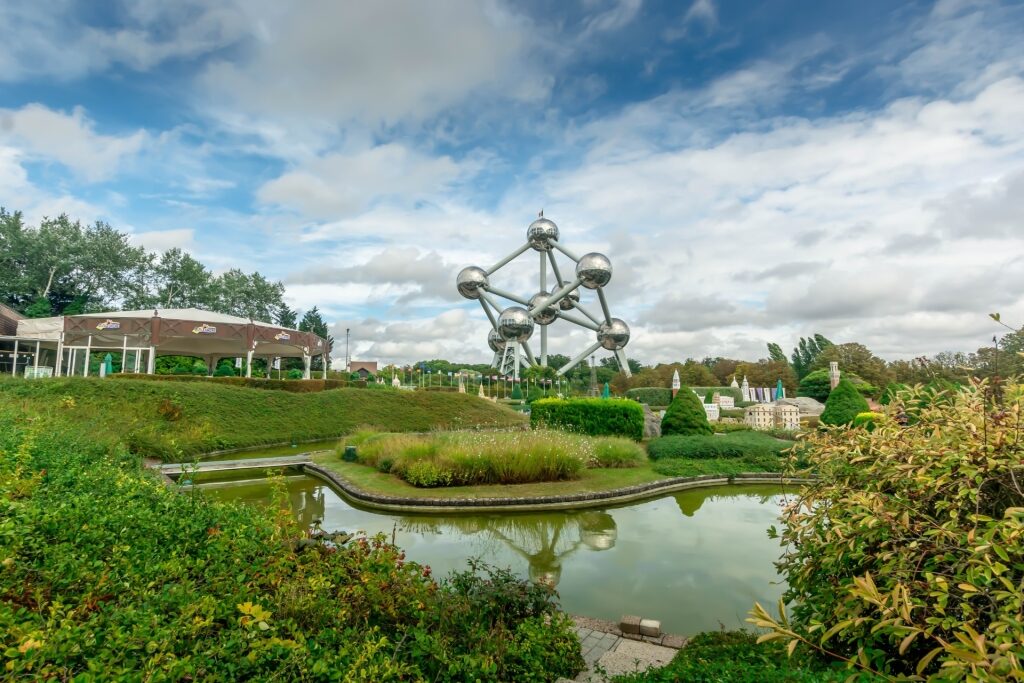
The Atomium
Standing 335 feet tall with electrons of gleaming stainless steel, this representation of an iron molecule at 165 billion times its normal scale is hard to miss. The Atomium was originally built as part of the 1958 Brussels World’s Fair. Today, it’s by far one of the most popular attractions in town.
At the time, it was a symbol of both scientific progress and of a brighter future for the city itself. The Belgian capital was still very much in the process of reconstruction after the devastation of the Second World War. In 1958, the city also became the capital of the European Economic Community, or EEC, which would eventually become the European Union.
Bruges
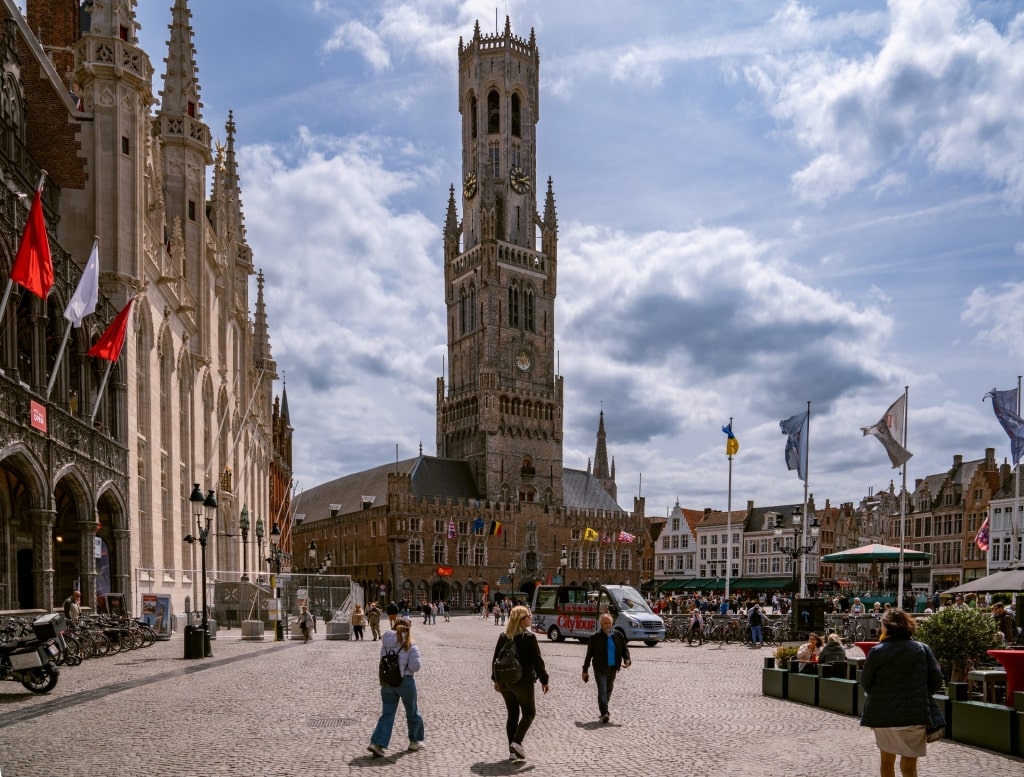
Belfry Tower, Bruges
What is Belgium known for? With its striking building facades gazing over 13th-century canals, the medieval city of Bruges is arguably the country’s most famous location. Although not the largest city in Belgium, it’s by far one of the most popular for international visitors.
Start your journey at the Belfry Tower, a UNESCO-lauded 13th-century tower situated in the center of the city’s Market Square. From there, you’ll want to explore the city’s many grand churches.
The Basilica of the Holy Blood, for example, is an absolutely stunning work of Gothic architecture. Although a church has existed on this site since the 12th century, the current iteration owes much to a 19th-century renovation. The cathedral is especially known for the beautifully colored painting at the far end of the nave.
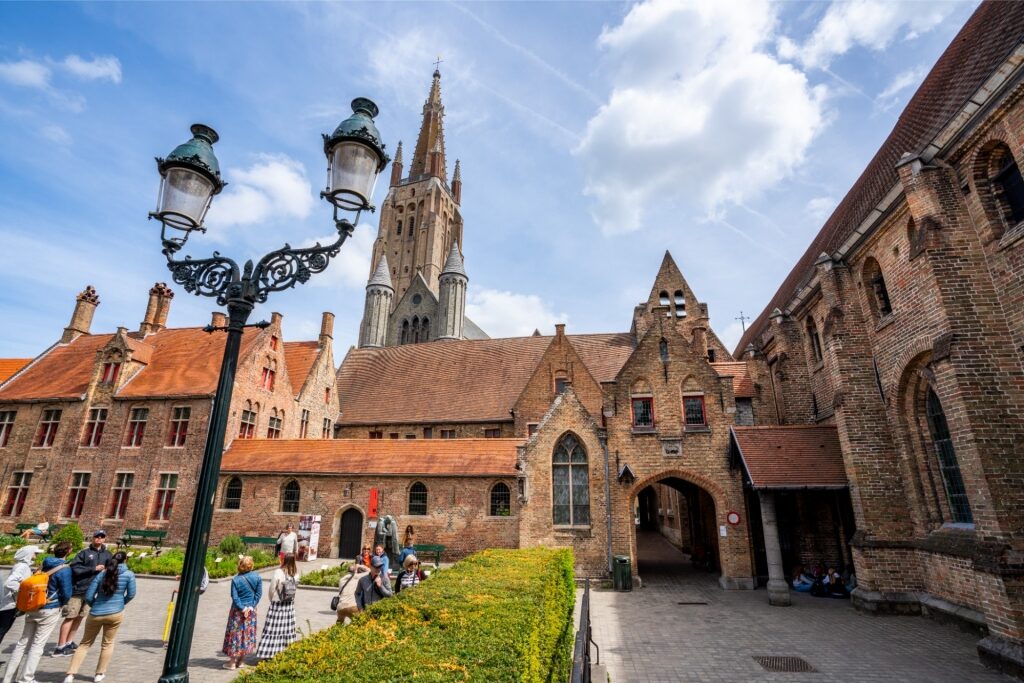
Church of Our Lady, Bruges
One of the best things to do in Bruges is to see the Church of Our Lady, which boasts the second-tallest brick church tower in the world. The highlight here is an original Michelangelo of the Madonna and Christchild, as well as the painted walls of the crypt underneath the church itself.
Mussels
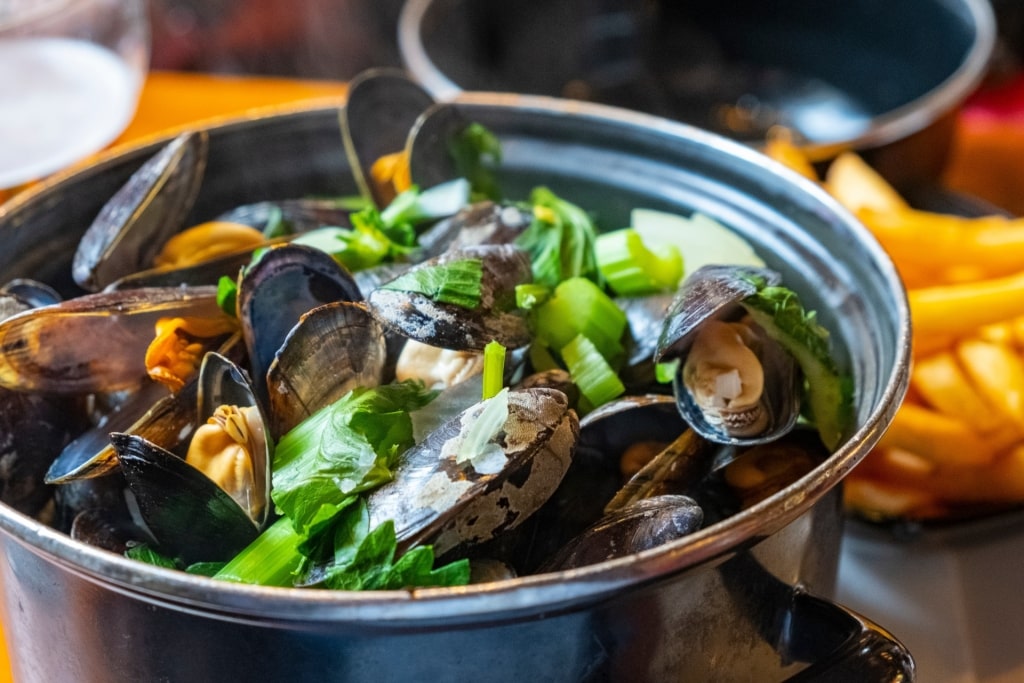
Mussels
Visitors love to talk about grabbing “mussels in Brussels,” not only because it’s fun to say, but also because these bivalves are everywhere. Moules-frites, or mussels with fries, may be popular in many European countries, but they are believed to have originated here. It’s often called Belgium’s national dish, although there are a few other contenders for the title.
Back in the 16th century, this dish was very much a working-class staple, as mussels were cheaper than most other seafood. Nowadays, it’s proudly served at the finest restaurants in Brussels. A recipe from 1781 suggests adding fries to the mix and the combination has stuck ever since.
Many Belgians opt to order their mussels mariniere, or with shallots, garlic, butter, white wine, and parsley, although variations with beer or cream as the cooking liquid are also popular. Either way, you’re going to want a hunk of bread along with the fries to dunk in the sauce.
Frites
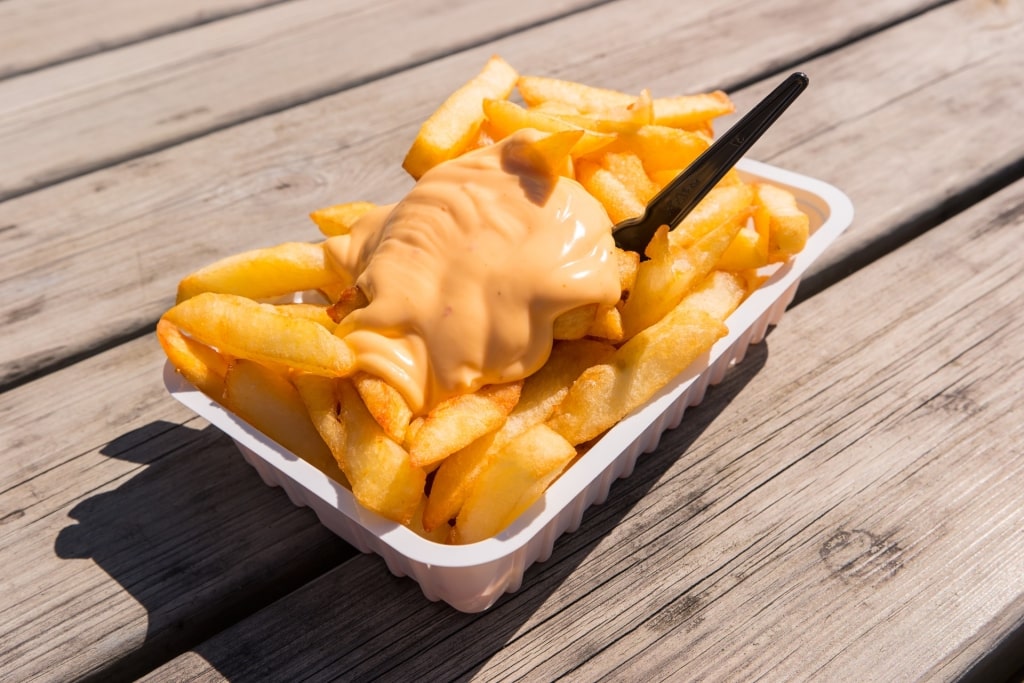
Frites
Yes, frites, also known as frieten in Flemish, may be the traditional accompaniment to mussels here, they’re also so much more. At most hours of the day and night, locals line up at friteries to pick up paper cones of freshly fried potatoes. Thick-cut, double-fried to a golden-crisp, and generously showered with salt, these go miles beyond ho-hum fast-food fries.
What really puts Belgian fries over the top is the array of accompanying sauces. A dollop of mayonnaise is classic, but generally just one of at least a dozen options. Try sauce andalouse, a mayo-based condiment stained pinkish from tomato paste and peppers. Or sauce américaine ups the ante by throwing capers, celery, herbs, tomato, and shellfish stock into the mix.
Ghent
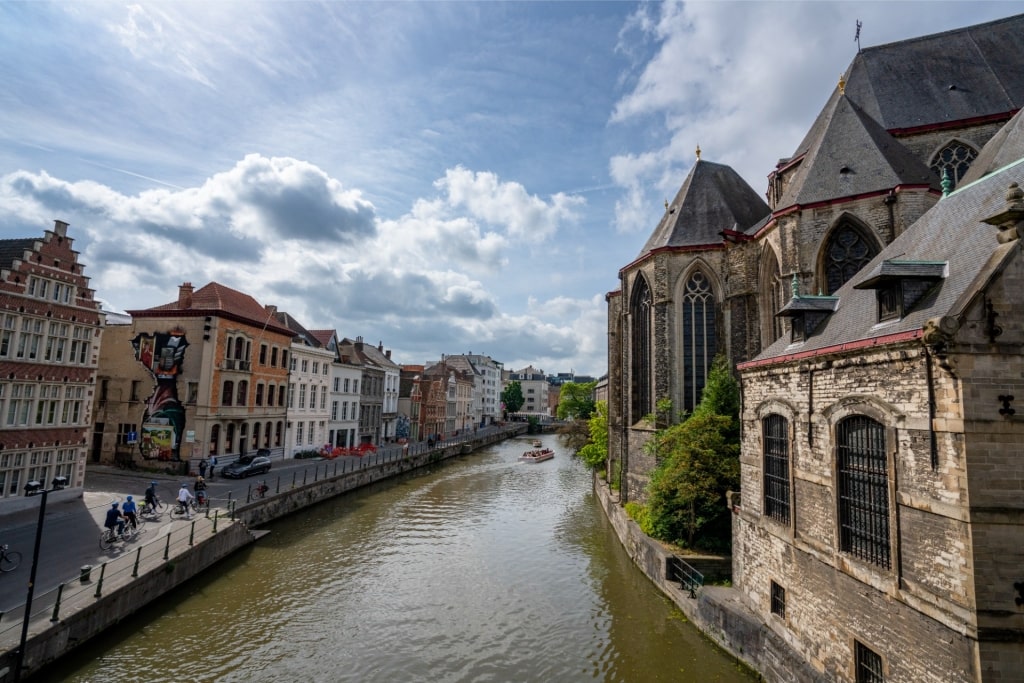
Ghent
As the capital of East Flanders and one of the most famous university towns in Europe, Ghent has long been a center of culture and learning.
Walking through the broad, open squares of the medieval center of the old port is a lovely way to spend an afternoon. Stroll along the Graslei to take in the historic guildhalls or across St. Michael’s Bridge for the best photo-op.
Easily the most famous attraction in Ghent is Gravensteen Castle, also known as the Castle of the Counts. It’s not often, after all, that you can tour a 12th-century fortress without ever leaving the city center. The castle is home to an excellent museum, which has English audio guides. It also offers panoramic views of the city from its fortified walls.
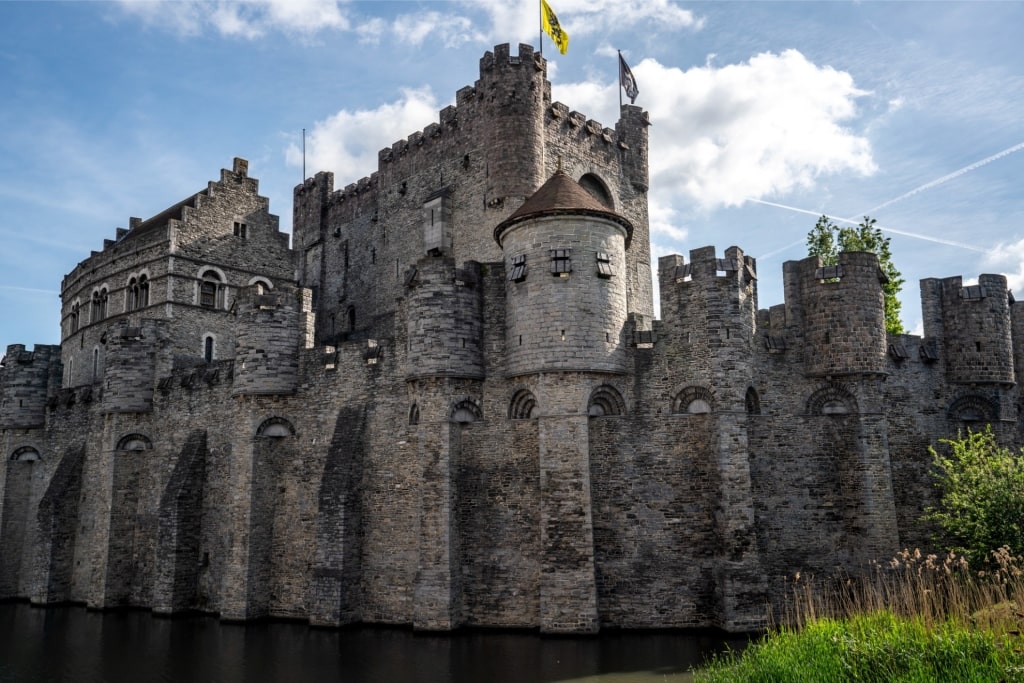
Gravensteen Castle, Ghent
The Counts of Flanders ruled from these halls until 1353. Since then, the castle has served many roles for the city, including as the mint, prison, and courthouse. The most curious incident in the fortress’s history is undoubtedly “The Battle of Gravensteen Castle” in 1949. This particular conflict wasn’t particularly bloody—no one even got hurt.
Instead, 138 university students captured the lone guard, barricaded the gates, and threw rotten fruit at passing police officers. They were protesting against a new beer tax. And while the police didn’t find the stunt very funny, locals in Ghent were so supportive of the students that none were charged.
Carbonnades Flamandes
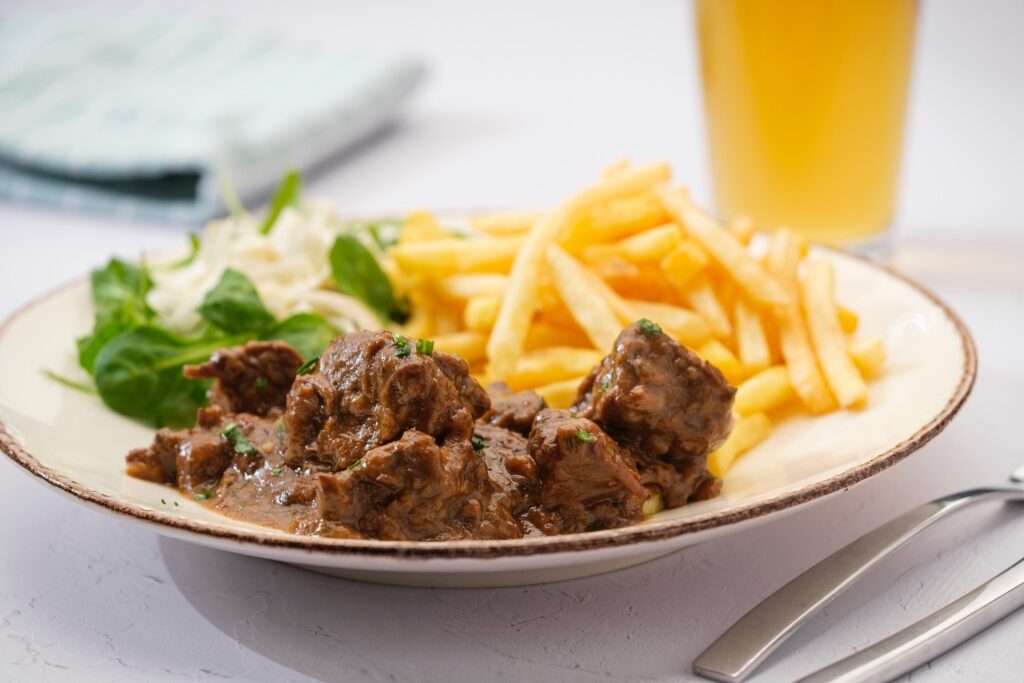
Carbonnades flamandes
If you’re seeking comfort food, it doesn’t get much better than this luxuriously browned Flemish beef stew. Countless regional variations of this dish exist throughout Belgium, although there are a few core tenants.
According to some, the stew was developed by Trappist monks as a way to use up their extra ales. Others believe Belgian coal miners developed the stew as a way to use their leftover grilled meats—hence the name carbonnade.
The protein of choice is typically a tougher cut of beef rendered tendered through hours of slow-simmering, although some cooks use pork or even rabbit. A large quantity of deeply caramelized onions is non-negotiable, as is a good Belgian beer. There’s no hard rule about which one to use, although a good Flemish red or oud bruin will do the trick.
The stew often has a subtly sweet-and-sour flavor profile, thanks to additions such as dried prunes or crumbled speculoos, a type of gingerbread cookie, depending on the region. A splash of vinegar or mustard is often added as a counterbalance to liven it up.
Chocolate Truffles and Pralines
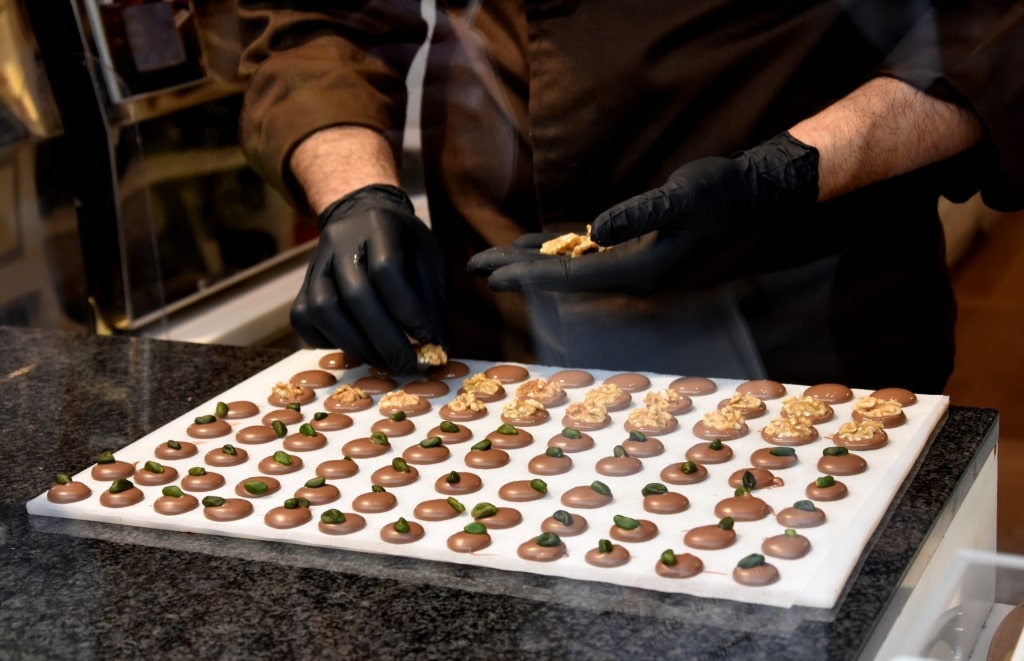
Chocolate pralines
Cacao may originally be a New World crop, but Belgian chocolate makers have taken this bean to remarkable heights. Hot chocolate became a popular drink among the Belgian upper crust in the 18th century. Within a matter of decades, Belgian chocolatiers had made a name for themselves throughout Europe.
In 1912, Jean Neuhaus II invented the praline. These jewel-like, bite-sized bonbons contained a softer filling encased in a tempered chocolate shell. From dark chocolate ganache spiked with liqueur to caramelized hazelnuts to marzipan, the possibilities are endless.
Chocolate truffles are often rustically presented with a dusting of cocoa powder. Pralines, on the other hand, are often so intricately decorated that they’re almost as fun to look at as they are to eat.
Part of the reason for Belgian chocolate’s reputation is that the government imposes strict quality regulations even on more affordable brands. While mass-market candy bars in many places contain little actual cocoa solids, anything called chocolate here needs to be 35 percent cocoa.
Read: Best Places to Visit in Europe
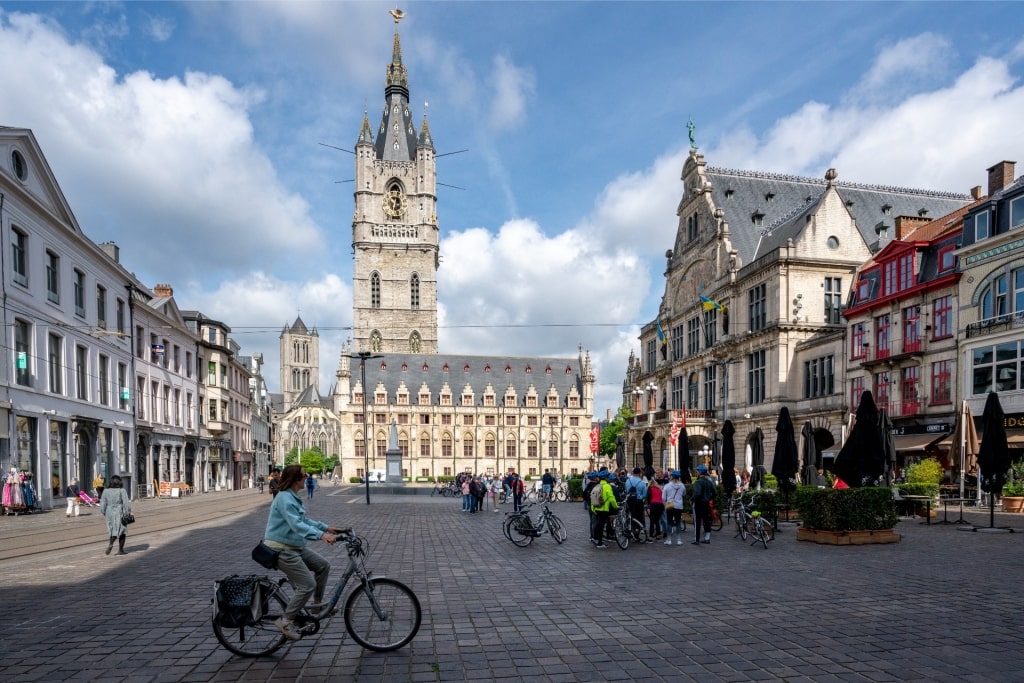
Ghent
Ready to explore some of northern Europe’s attractions and cuisine? On a cruise to Belgium with Celebrity, you’ll discover all that this small but culturally rich nation has to offer.
